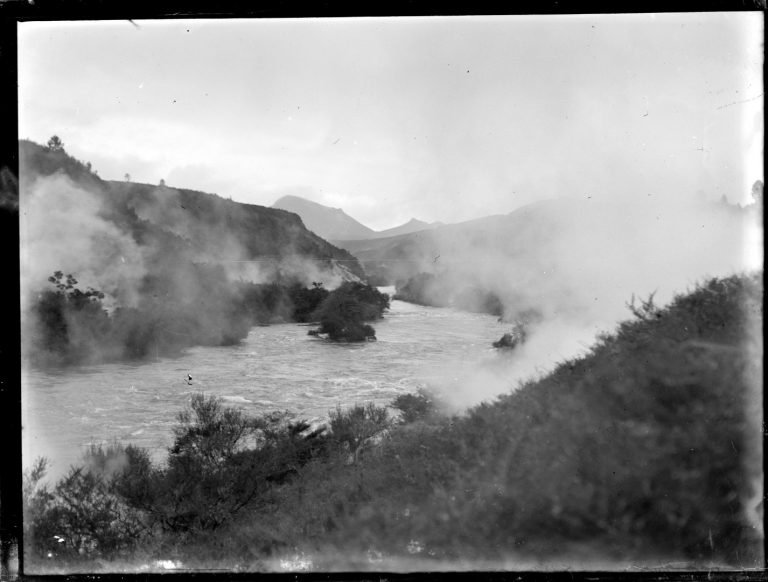Nga Rawa/Rauemi | Resources
Nga tapiri tautoko rauemi me te purongo | Additional Helpful Resources and Information
The following section provides information on additional links for environmental information that you might find of use in environmental projects.
-
To find out more about Te Ture Whaimana o Te Awa o Waikato and the Waikato River Authority take a look at their website.
-
Follow this link for several different planting guides, from the Waikato Regional Council, that provide information to help you select and plant native trees and shrubs to suit your local area and climate, aid farming operations, provide food and shelter for native birds, reduce erosion and much more.
-
New Zealand has approx. 40 different native fish species of which thirty-one are found only in New Zealand. For an overview of New Zealand’s fresh water fish fauna follow the link to NIWA’s website.
Interested in a particular fish species? The links below from NIWA and the Department of conservation provide more information on individual species. Follow the link then click on the species you’re interested on to find out more information.
Maanaki Tuna is a multi-disciplinary group comprised of academics, teachers and researchers from Massey University, iwi, hapu and environmental groups who have joined forces to address the plight of the tuna – the longfin eel, check their website.
-
Introduced plants and animals are an increasing problem in many New Zealand waterways, including the Waikato River. Our Freshwater ecosystems are vulnerable to invasion by pests and weeds because it is very hard to detect them until they are a problem. Once pest fish have invaded a waterway it is very difficult to remove them. It is very important to prevent pest fish from invading into places where they aren’t already. Aquatic pests often compete with or feed on our native plants and animals. They can also make our waterways less suitable for recreational uses, such as swimming.
For more information visit the pages from the Waikato Regional Council and the Department of Conservation.
-
Animal pests are a major threat to New Zealand’s native species. Pests such as possums, rats and stoats compete with our native birdlife for food and habitat. They also eat the eggs and young and attack the adults. For more information on control of animal pests visit the pages from the Waikato Regional Council and the Department of Conservation.
-
New Zealand has about 3,000 introduced plants. Of these, 350 are considered environmental weeds because they threaten our native biodiversity. Weeds compete with native flora and fauna for sunlight and water, they can severely alter natural landscapes and threaten the survival of native plants and animals.
There are 13 common weeds threatening our native habitat that you and your community can help bring under control. We call them the Dirty Dozen and they are some of the worst offenders. For more on the Dirty Dozen visit the DOC website.
For factsheets on a wider range of weeds species visit the Waikato Regional Council website.
-
There are many organisations which can help assist in providing funding for projects subject to the proposed work meeting some funding criteria and suitable applications being made. If you are seeking funding assistance for an environmental project – take a look at the following websites:
Waikato Catchment Ecological Enhancement Fund
The Waikato Catchment Ecological Enhancement Trust (WCEET) assists organisations, agencies and individuals with projects that foster and enhance the sustainable management of ecological resources in the Lake Taupo and Waikato River catchments.
DOC Community Fund – Pūtea Tautiaki Hapori
The Department of Conservation (DOC) community fund is directed at practical, on-the-ground projects that maintain and restore the diversity of our natural heritage and enable more people to participate in recreation, enjoy and learn from our historic places, and engage with and value the benefits of conservation.
Small Scale Community Initiatives Fund
The Small Scale Community Initiatives Fund (SSCIF) supports volunteer community groups and individuals undertaking ecological restoration via animal and plant pest control.
The Waikato River Clean Up Trust and The Waikato River Authority
The vision of the Waikato River Authority (WRA) is for a future where a healthy Waikato River sustains abundant life and prosperous communities who, in turn, are all responsible for restoring and protecting the health and wellbeing of the Waikato River, and all it embraces, for generations to come. WRA funds rehabilitation initiatives for the Waikato River in its role as trustee for the Waikato River Clean-up Trust.
Wai Ora Fund – Te Wai Maori Trust
The purpose of the fund is to encourage Iwi and hapū to undertake programmes that contribute to the management and protection of freshwater fisheries and their habitats. The purpose of Wai Ora is to enable iwi and Māori to obtain funding to promote and advance freshwater fisheries development, research and education.

Orakei Korako [Geyserland]. Whites Aviation Ltd :Photographs. Ref: WA-62646-G. Alexander Turnbull Library, Wellington, New Zealand.
